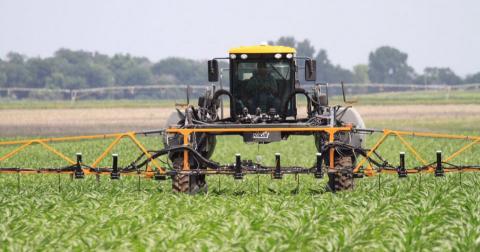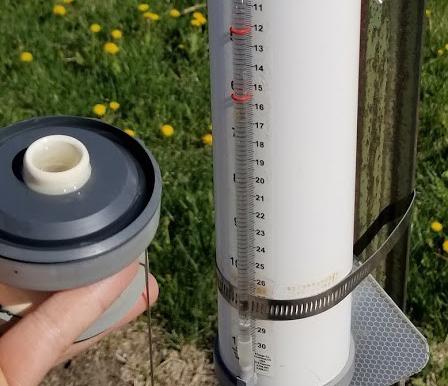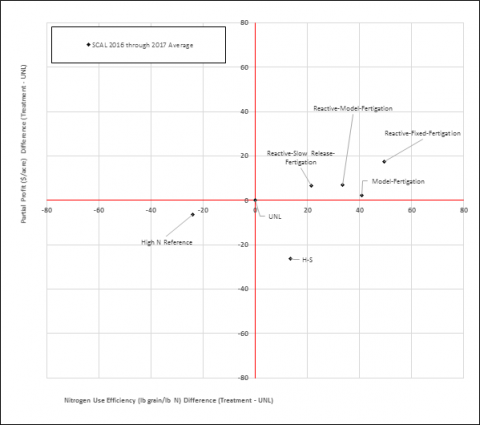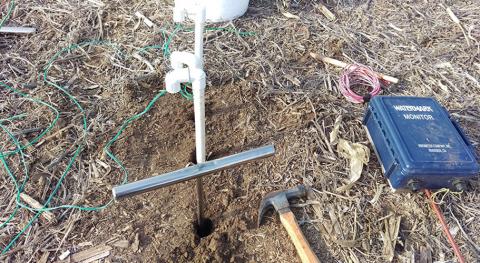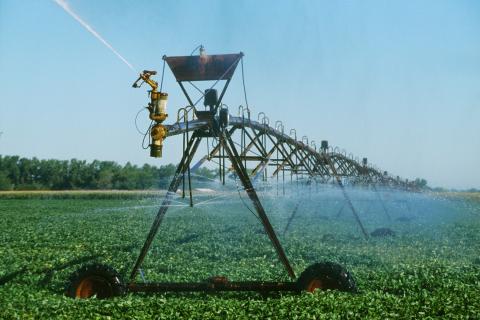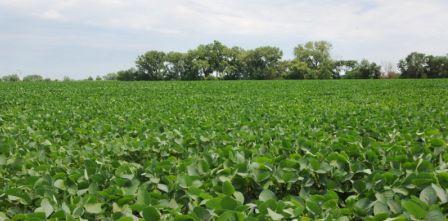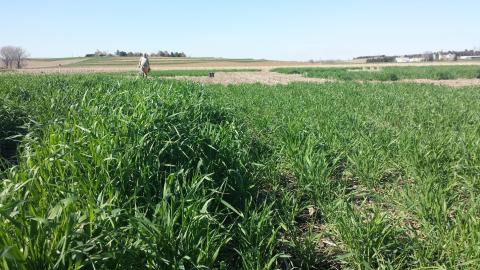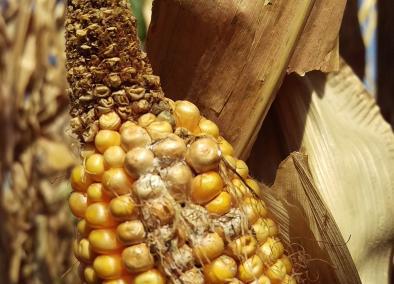Consequences of Fall-Applied N
November 9, 2018
A fall nitrogen application has a relatively high loss potential and is considered the riskiest N management practice. Consider breaking tradition and splitting your N applications next year to coincide with when your corn most needs more N.
Take Time to Set Up Nebraska Ag Water Management Equipment
May 23, 2018
As you finish planting, consider installing ETgages and soil moisture sensors before crop roots interfere. Then join the hundreds of farmers contributing their data each week to the Nebraska Agricultural Water Management Network, a valuable tool for managing your crop.
Feasibility of Sensor-Based Nitrogen Fertigation Management in Corn
January 8, 2018
An article from the Proceedings of the 2018 Nebraska Extension Crop Production Clinics on university research testing sensor-based N fertigation treatments.
Determining Beginning Soil Moisture for Planning Decisions
April 12, 2018
Soil moisture sensors installed now can provide valuable information for dryland producers who want to determine existing soil moisture level and adjust cropping or planting plans accordingly. The authors installed and will be monitoring soil moisture readings at six sites in south central Nebraska.
Planting Soybean after Soybean (Part 2): In-Season Management Considerations
April 13, 2017
In Part 1 of this article, we look at considerations for planting soybean after soybean. In this article, Part 2, we share considerations for in-season management.
Planting Soybean after Soybean (Part 1): Planting Considerations
April 13, 2017
Farmers are increasing their soybean plantings for 2017, which likely means some are shifting to soybeans-after-soybeans. This article looks at what you should be considering at planting time as you consider changing your cropping sequence.
Implementation of Cover Crops in Corn and Soybean Systems in Nebraska
November 29, 2016
A short review of cover crop research conducted at four University of Nebraska research fields (two irrigated, two dryland) to study the feasibility and impact of winter cover cropping on soil quality, soil water, and crop yields in corn-soybean systems. Objectives were to quantify cover crop emergence, fall and spring biomass production, soil water changes, soil chemical and physical property changes, and crop yields.
Harvest 2016 — When Corn Yields are Below Expectations
October 14, 2016
A review of 2016 growing conditions across Nebraska sheds light on a number of factors that may have contributed to reduced yield in individual fields. An understanding of these factors may be helpful when selecting seed for 2017.

